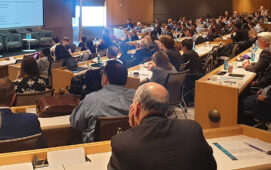Swift’s annual user conference behemoth Sibos kicked off this morning with a debate about the future of securities market infrastructures that painted a particularly sobering picture. Obviously, with the spectre of a potential breakup of the Eurozone loitering in the background, discussion turned to what the impact of such an event would be on the region’s market infrastructures. The answer, it appears, is a breakdown of communications cross border and a renewed focus on the market protectionism that already exists within the global landscape.
Regardless of whether the breakdown of the Eurozone is allowed to happen or not (and the potentially catastrophic results of which are a popular topic of discussion in the convention centre today), this element of national interest has already had a profound effect on infrastructure development thus far. This has been ably demonstrated by the plethora of central clearing counterparties (CCPs) that have sprung up across the globe, raging arguments amongst regulators about extraterritoriality and the continuing debate about oversight of data repositories.
National regulators are not keen to cede power to a central body or to a foreign counterpart, especially one across the pond. However, this morning’s debate did not touch on how this dynamic might impact the utility for legal entity identifiers (LEI) that Swift and its key partner, the Depository Trust and Clearing Corporation (DTCC), are planning to develop with ISO to meet the requirements of the US Office of Financial Research (OFR).
Surely, given that it’s a task that is seeking to meet the requirements of all the regulators under the sun (it is, after all, a global identifier), these developments will have a significant impact on the initiative? Given my bent for asking awkward questions, I shall endeavour to pose a few pertinent ones to the panel later this week that is due to be debating the practicalities of introducing an LEI. Jurisdictional turf wars may prove another stumbling block for the partners to overcome.
Subscribe to our newsletter




